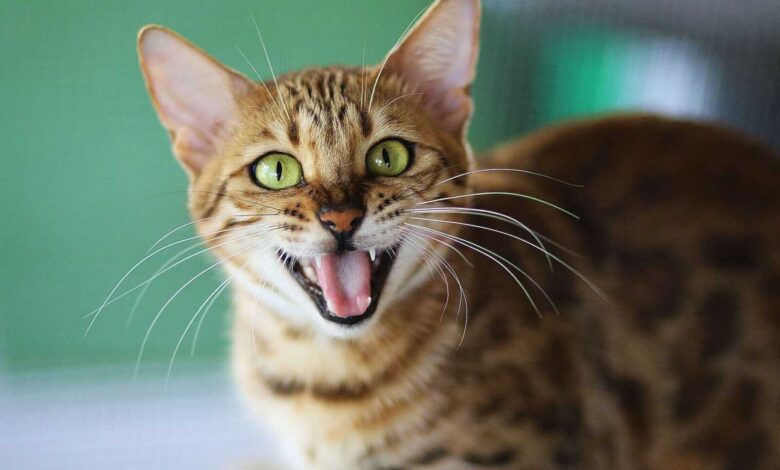
Cats make wonderful companions, but like any pet, they can exhibit certain behaviors that may be challenging for their owners. From litter box issues to excessive meowing, understanding the root causes and employing effective solutions can lead to a harmonious relationship with your feline friend. In this comprehensive guide, we will explore common cat behavior problems and provide practical advice on how to address and resolve them.
Understanding the Root Causes
Before we delve into specific behavior problems, it’s essential to recognize that cats are individuals with unique personalities. Behaviors often have underlying reasons:
- Litter Box Problems: These can arise due to medical issues, dirty litter boxes, or stress. Cats are known for their cleanliness, and deviations from the litter box can be concerning.
- Scratching: Cats have a natural instinct to scratch to mark their territory and keep their claws healthy. However, this behavior can be destructive if not managed.
- Biting: Cat bites may result from fear, play aggression, or overstimulation. Understanding the triggers is crucial for addressing this behavior.
- Aggression: Cats can exhibit aggression due to territorial disputes, fear, or redirected aggression. Identifying the cause is essential to finding a solution.
- Excessive Meowing: Cats may meow excessively for various reasons, including hunger, stress, or simply seeking attention. Determining the cause can help reduce this behavior.
- Spraying: Spraying, typically seen in unspayed or unneutered cats, is a way of marking territory. It can be frustrating for owners.
- Climbing: Cats are natural climbers and explorers. Climbing can become problematic if it damages furniture or poses safety risks.
- Chewing: Cats may chew on objects or plants out of curiosity or to relieve teething discomfort. In some cases, it may indicate dietary deficiencies.
- Destructive Behaviors: Destructive behaviors, such as scratching furniture or knocking things over, can be a result of boredom, anxiety, or a lack of environmental enrichment.
Common Cat Behavior Problems and Solutions
1. Litter Box Problems
Solution:
- Ensure that the litter box is clean and placed in a quiet, accessible location.
- Rule out any underlying medical issues by consulting your veterinarian.
- Consider using multiple litter boxes, especially in multi-cat households.
- Experiment with different types of litter to find the one your cat prefers.
- Opt for larger litter boxes, especially for larger cats.
2. Scratching
Solution:
- Provide appropriate outlets for scratching, such as scratching posts and pads.
- Use deterrents, like double-sided tape or pet-safe sprays, on furniture to discourage scratching.
- Regularly trim your cat’s nails to reduce potential damage.
- Explore soft nail caps that can be placed over your cat’s claws.
- Reward and praise your cat when they use scratching posts or pads.
3. Biting
Solution:
- Discourage rough play that may lead to biting.
- Offer a variety of interactive toys to keep your cat engaged and tire them out mentally and physically.
- Practice bite inhibition by yelping and withdrawing attention when bitten.
- Avoid harsh punishments, as these can exacerbate fear-based aggression.
- Use positive reinforcement to reward good behavior.
4. Aggression
Solution:
- Identify the triggers for aggression, such as specific situations or stimuli.
- Separate cats during conflicts to prevent escalation.
- Gradually reintroduce cats to each other using scent-swapping and controlled visual exposure.
- If aggression persists, seek professional guidance from a veterinarian or certified cat behaviorist.
5. Excessive Meowing
Solution:
- Determine the cause of the excessive meowing (e.g., hunger, attention-seeking, or stress).
- Establish a consistent feeding routine to reduce mealtime-related meowing.
- Provide interactive toys and engage in play sessions to mentally stimulate your cat.
- Gradually ignore excessive meowing when it is simply for attention.
6. Spraying
Solution:
- If your cat is unspayed or unneutered, consider having them spayed or neutered, as this can significantly reduce spraying behavior.
- Thoroughly clean and deodorize areas where your cat has sprayed to remove the scent.
- Use synthetic pheromone sprays in areas where your cat has sprayed to discourage further marking.
- Minimize stress triggers in your cat’s environment, such as territorial disputes with other animals.
7. Climbing
Solution:
- Provide vertical spaces for your cat, such as cat trees, shelves, and window perches.
- Secure heavy or fragile items to prevent accidents.
- Use deterrents on areas you want to keep off-limits to your cat.
- Redirect your cat to appropriate climbing and exploring areas with toys and treats.
8. Chewing
Solution:
- Ensure your cat has a balanced and appropriate diet to reduce the urge to chew on non-food items.
- Offer safe chewing alternatives, such as cat-friendly toys or dental chews.
- Cat-proof your home by keeping dangerous items out of reach.
- If chewing persists, consult your veterinarian to rule out underlying health issues.
9. Destructive Behaviors
Solution:
- Provide a variety of enrichment toys and activities to keep your cat mentally and physically engaged.
- Establish a daily play routine to burn off excess energy.
- Consider using interactive feeding puzzles or treat-dispensing toys.
- Use positive reinforcement to reward good behavior and redirect your cat’s attention away from destructive actions.
Seeking Professional Help
If your cat’s behavior problems persist despite your efforts, it’s essential to seek professional help. Consult with your veterinarian or a certified cat behaviorist who can provide tailored advice and determine if there are any underlying medical issues contributing to the behavior.
In conclusion, addressing common cat behavior problems requires patience, consistency, and an understanding of your cat’s unique needs and triggers. By creating a stimulating and loving environment and employing positive reinforcement techniques, you can help your feline companion become a well-adjusted and content member of your household.








